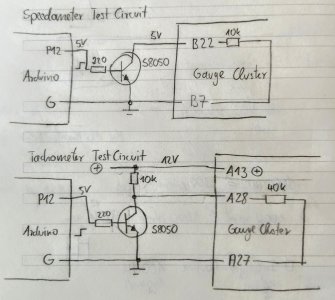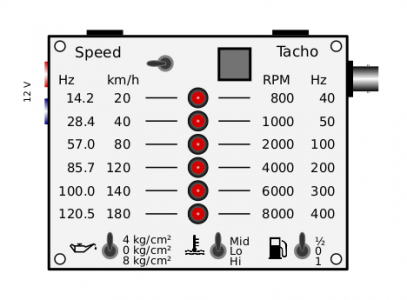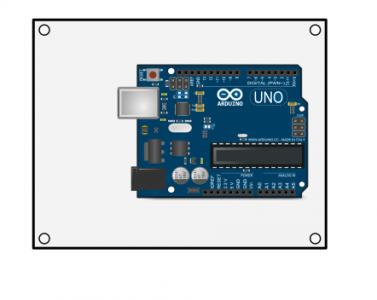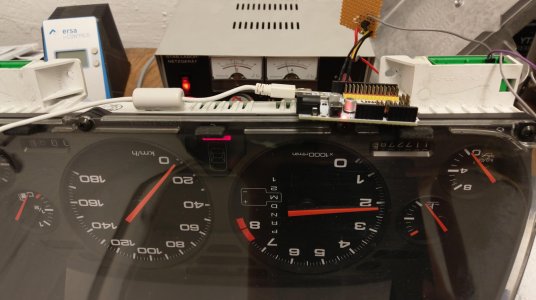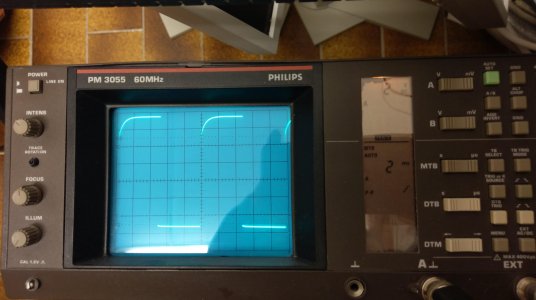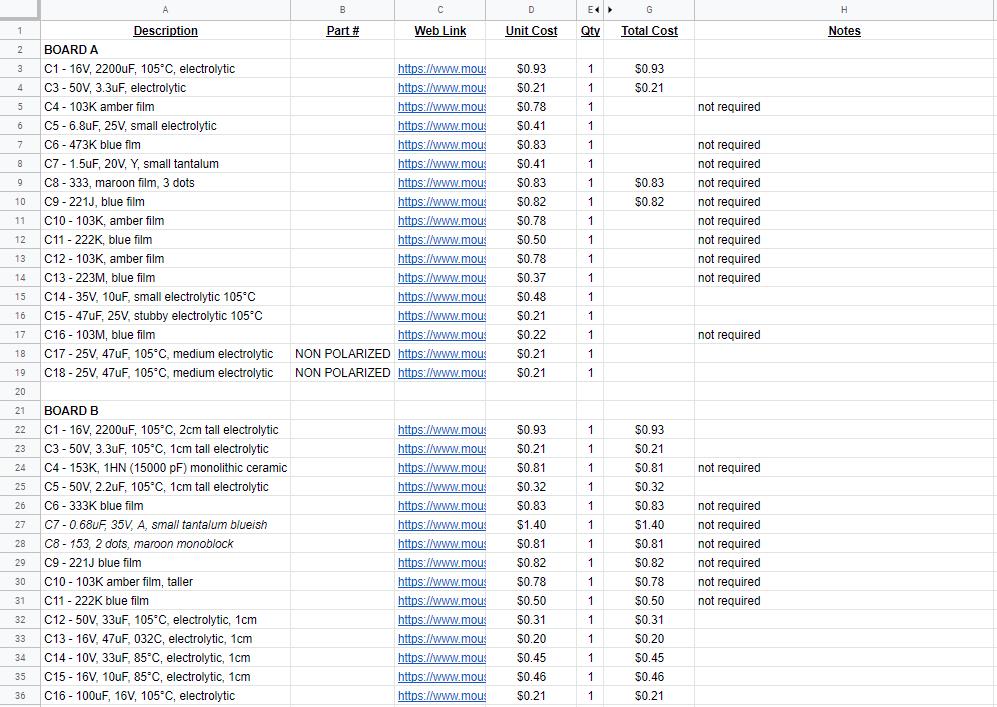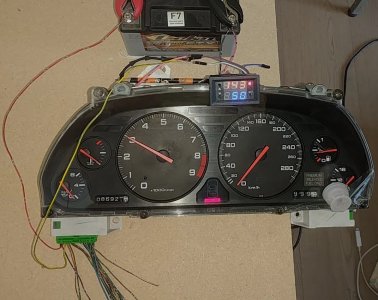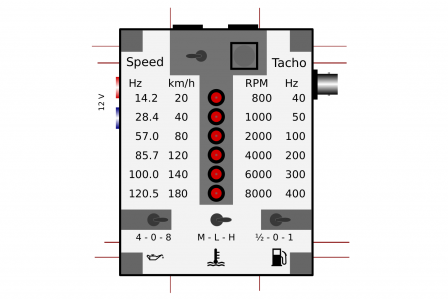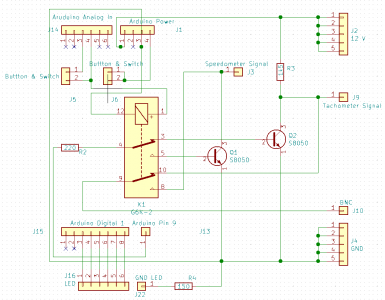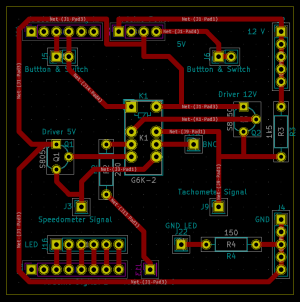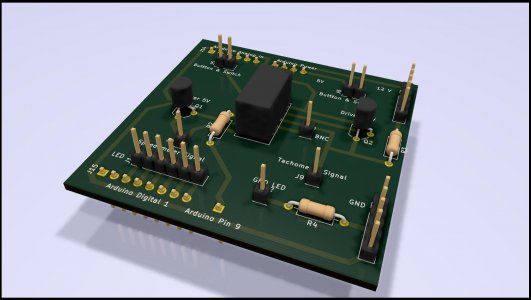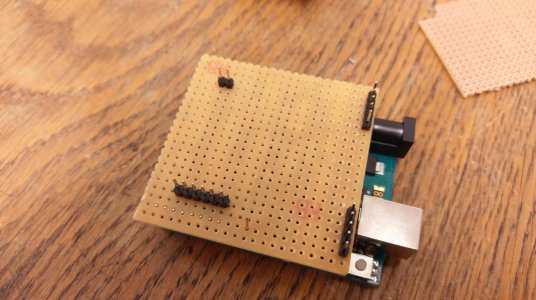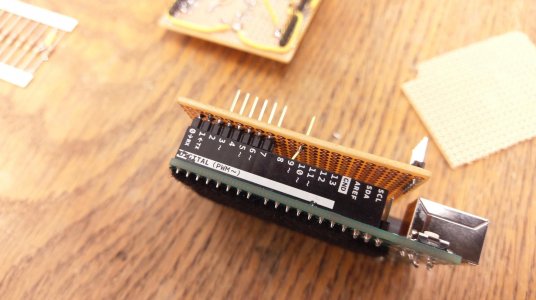Since a few days my instrument cluster is out of the car, primarily for replacing the capacitors to prevent the popular cluster fire issue.
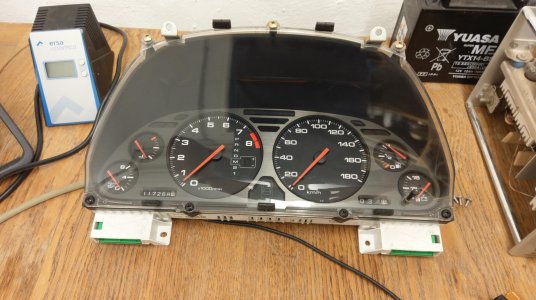
To avoid any issues before installing it into the car a small test bench is built to check lamps, indicators and the two main meters.
Drew helped with the pin-out of the gauge which is almost matching this 1997 JDM cluster except some small differences (seat belt, catalytic converter and high beam). Thanks!
The speedometer seems to be a simple circuit with 5V supplied from the cluster at pin B22 (with a ~10 k resistor in series). Note that the needle starts moving when touching B22 to ground fast and repeatedly.
About five lines of code on an Arduino are sufficient to create a timed interrupt switching 5V at pin 12. Using an S8050 transistor to pull down B22 is sufficient to get the cluster (including the odometers) to run.
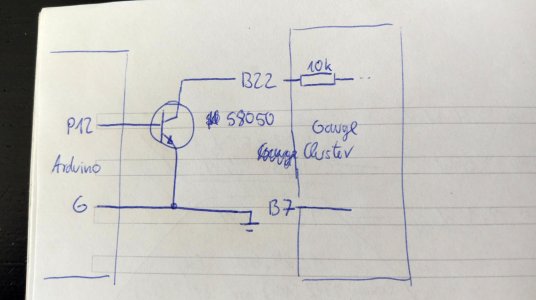
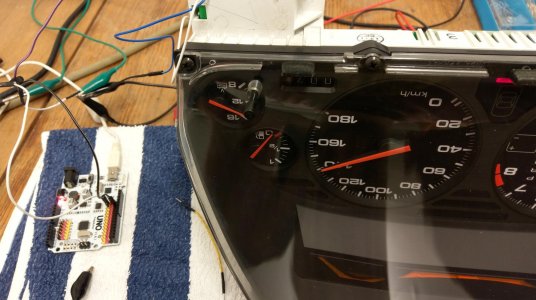
Now the tachometer is of a different type of input, it seems. Power is supplied to the circuit via pins A13 and A27 (indicated by the brake light warning light coming on). The tacho pulses are coming in via pin A28.
There is no voltage coming out of the pin. Connecting the Arduino 5 V output directly to A28 distorts the signal but no needle movement. Manually contacting A26 to 12 V does not yield any movement either.
Has anybody been successful in driving the tachometer of the NSX cluster so far?
When looking at T3TEC's (and other) calibration rigs they don't look like voltages larger than 12 V are being used but I'm out of ideas

To avoid any issues before installing it into the car a small test bench is built to check lamps, indicators and the two main meters.
Drew helped with the pin-out of the gauge which is almost matching this 1997 JDM cluster except some small differences (seat belt, catalytic converter and high beam). Thanks!
The speedometer seems to be a simple circuit with 5V supplied from the cluster at pin B22 (with a ~10 k resistor in series). Note that the needle starts moving when touching B22 to ground fast and repeatedly.
About five lines of code on an Arduino are sufficient to create a timed interrupt switching 5V at pin 12. Using an S8050 transistor to pull down B22 is sufficient to get the cluster (including the odometers) to run.


Now the tachometer is of a different type of input, it seems. Power is supplied to the circuit via pins A13 and A27 (indicated by the brake light warning light coming on). The tacho pulses are coming in via pin A28.
There is no voltage coming out of the pin. Connecting the Arduino 5 V output directly to A28 distorts the signal but no needle movement. Manually contacting A26 to 12 V does not yield any movement either.
Has anybody been successful in driving the tachometer of the NSX cluster so far?
When looking at T3TEC's (and other) calibration rigs they don't look like voltages larger than 12 V are being used but I'm out of ideas







